For his master thesis in architecture, Cyrill Chrétien of the Lucerne University of Applied Sciences and Arts was given the following task: "Design a hotel for the site of a former quarry by Lake Lucerne.”
To begin his research, Chrétien studied the topographical location and history of the quarry. Inspired by the existing hotel landscape along Lake Lucerne, he also thought about the past, present and future of tourism in Switzerland.
The Future of Tourism in Switzerland is Chinese
In order to design a sustainable hotel project, future trends in tourism cannot be ignored. It is no secret that Chinese visitors are a huge driver for Switzerland’s tourism industry. Even though the average Chinese tourist enters and leaves Switzerland within 48 hours, they spend an average of 350 francs per day. This is more than double the average spend of 176 francs.
This booming segment of tourists poses a true opportunity for service providers in Switzerland. While guests from nearby countries in the European Union have an increasingly hard time to justify vacation expenditures in Swiss francs, visitors from China do not face the same hurdles.
The nature of a typical hotel stay is "in & out". So the geographical location of Transit-Hotel would be perfect: The Lake Lucerne region is touted a “must see” destination for Chinese visitors. The views of the nearby Alps and the majestic lake are astonishing. And the numerous luxury watch boutiques in Lucerne are welcome as well.
The Architecture of Transit-Hotel
"The shape of the hotel is determined by two factors: One the one hand, it was the unique and somehow powerful location of this former quarry in Brunnen. On the other hand, I developed a new typology for hotels which influenced the exterior design and architecture."
For Transit-Hotel, Chrétien came up with a modern interpretation of hotel architecture. It is influenced by transient spaces such as shopping malls, airports or cruise ships.
A typical Swiss hotel has 27 rooms, and there usually is a forth floor and room numbers containing the number four. If Chinese guests are the bright future for tourism in Switzerland, these establishments will be suboptimal at best. (The number “4” is considered an unlucky number, it is a taboo among Chinese.)
For Transit-Hotel, the architect envisioned 500 rooms with a total of 1000 beds. I presume that the rooms are facing the mountain side because tourists will typically be arriving at night. Common areas for shopping, entertainment or food are facing the lake and the mountains, however.
When abroad, Chinese tourists have a preference for Chinese food. But many do not mind trying local Swiss foods, either. Chrétien’s food concept for Transit-Hotel includes many smaller restaurants instead of a large food hall. Some of them might serve cheese fondue, and all of them have menus translated into Chinese.
I asked the architect whether he incorporated any elements of feng shui in his design: "Unfortunately, in this 16 week project, there was not enough time to come up with an interior design concept, including feng shui."
A bus terminal and parking lot for 18 coaches is located underneath the hotel. It provides easy arrivals and departures of multiple buses at once, and quick access to the rooms. Since most Chinese tourists tour Europe by bus, this clever design tweak would make the arrival/departure procedure most efficient.
Oh, and one last thing: The visualization does not reveal this, but I strongly believe that the hotel will need to have lake access. Swans are the number one photo subject for Chinese tourists in Switzerland...
Mind you, Transit-Hotel is far from putting heads in beds. It is a fictional, purely hypothetical project on display at Alpines Museum der Schweiz in Bern.
More Information
- Alpines Museum der Schweiz in Bern, April 2 – June 28, 2015
- Read the entire master thesis about "Transit-Hotel" by Cyrill Chrétien (in German)
(Photographs copyright by Xiaobin Fu, model vizualisations copyright by Cyrill Chrétien/Alpines Museum Schweiz; sources: NZZ, tourobs.ch)

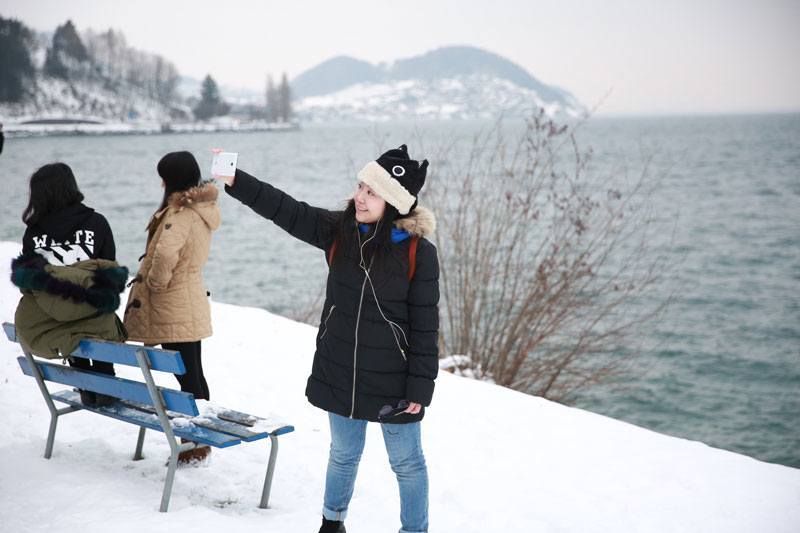
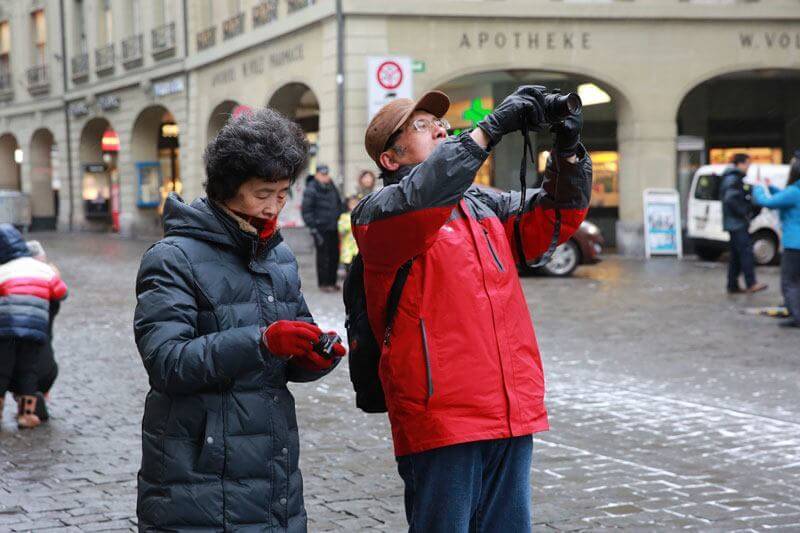
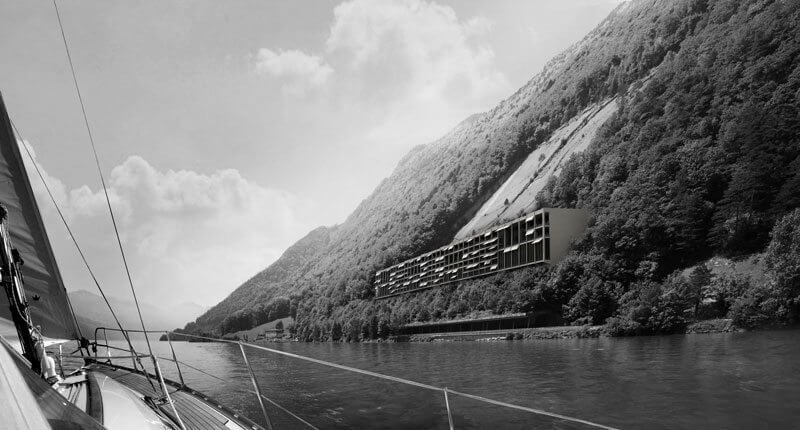
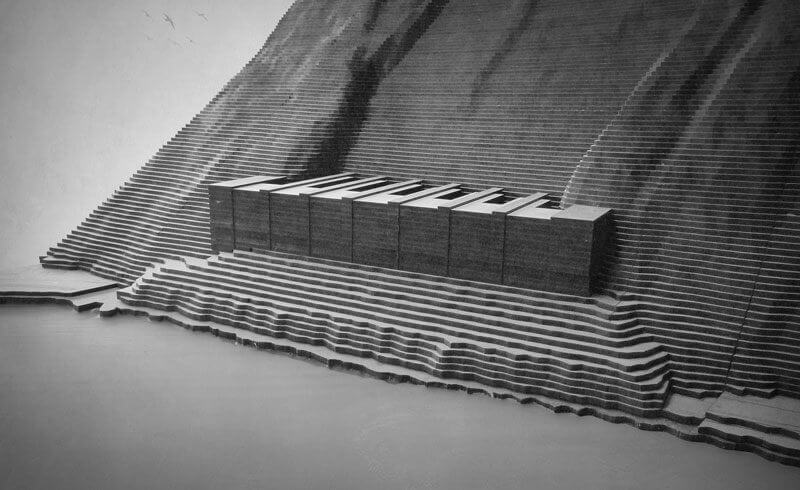
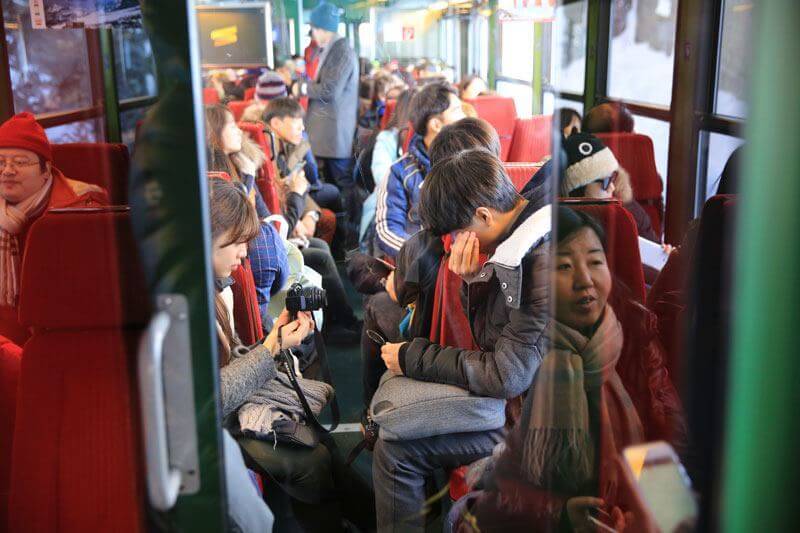
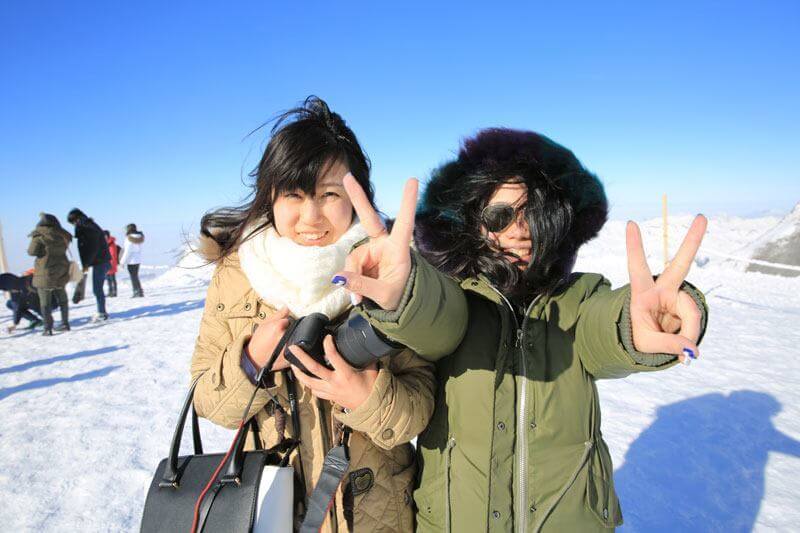
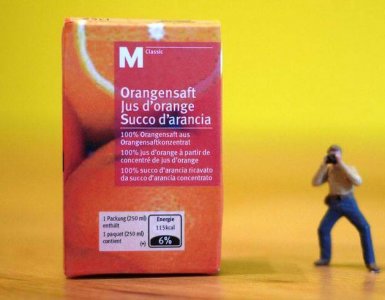
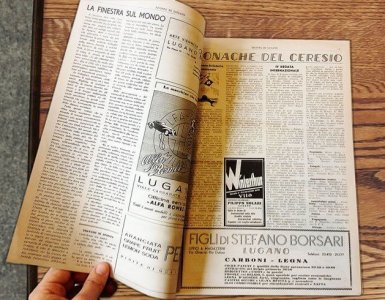
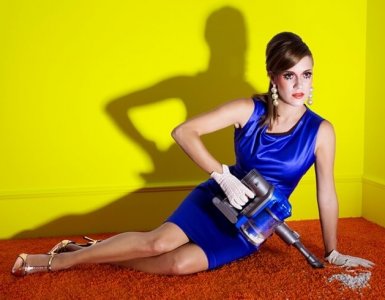

Spot on with the swan obsession of many a Chinese visitor — I have seen this in person, and this is for real. (They then want to see the Neuschwanstein Castle in Germany — because it has a “swan” character in Mandarin Chinese.)
Thanks for the input about Neuschwanstein Castle! I was not aware of that, but it explains the fascination with swans.